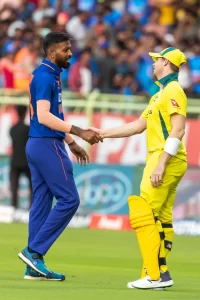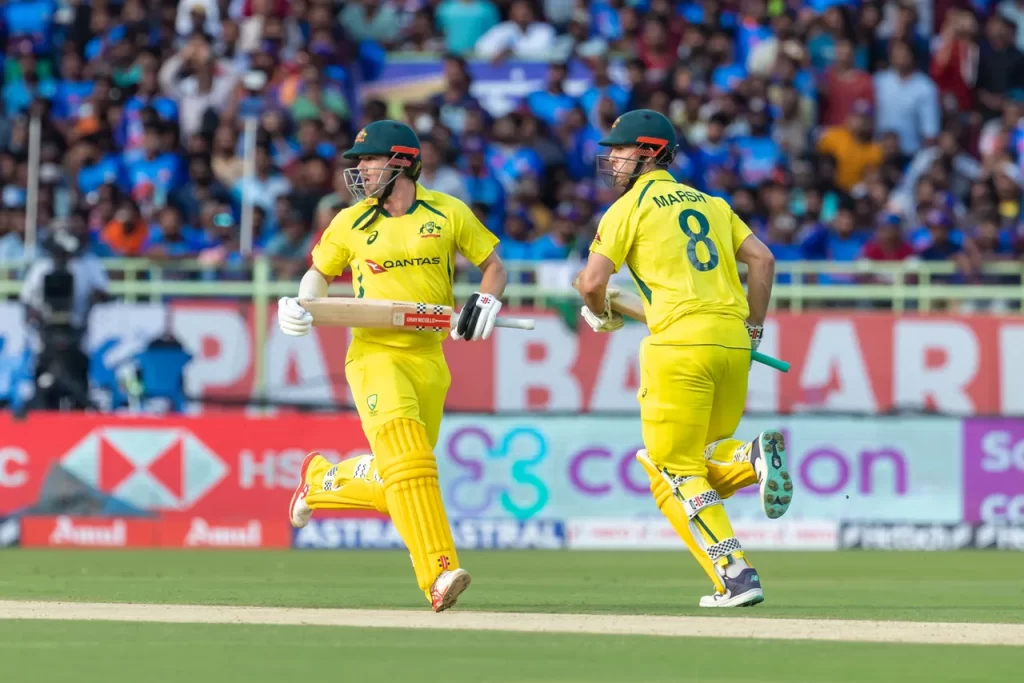
At the end of the second ODI between Australia and India, Mitchell Marsh and Travis Head wore broad smiles as they walked back to the pavilion. After all, the duo had smashed the Indian attack to shreds, piloting the visitors to a 10-wicket win in a mere 11 overs. Meanwhile, the Indian players seemed dazed and dumbfounded. The kind of a day that the home side’s players would want to forget quickly and move forward.
So what could be the reason behind India’s capitulation with the bat in hand? The first over of the game bowled by Mitchell Starc itself gives enough evidence of what might have gone wrong for the home team – Shubman Gill’s back foot was largely stationary and with a half stride forward, he drove away from the body to the fielder stationed at backward point. The India captain Rohit Sharma followed his opening partner back to the pavilion by attempting an ambitious lofted drive, only to be caught by the lone slip fielder.
Those two dismissals tell a story – India perhaps didn’t respect the conditions on display. It wasn’t as if the ball moved zig-zag off the seam or swung appreciably for Starc. There was a modicum of movement and the Indian batters weren’t able to recalibrate their approach. The rot didn’t stop there for the hosts as they soon slid to 71 for 6.
Suryakumar Yadav shuffled across and hung back in the crease, and was aptly trapped in front by Starc. The left-arm quick then proceeded to remove India’s saviour from the last game KL Rahul. Here, some credit has to be given to Starc as he set the trap by employing a couple of wobble seam deliveries that left Rahul before delivering the knockout punch with an inswinger. With Virat Kohli still at the crease, India would have hoped to at least reach a total of around 200. But when he was trapped in front by Nathan Eillis, the home team had dug themselves into a massive hole from which there was no escape route. Eventually, India could muster a score of just 117.
In reality, the pitch for the first ODI at the Wankhede Stadium probably offered more assistance for the pace bowlers. Just that Rahul and a couple of other batters were able to row through the tricky phase and guide the side to a five-wicket win.
“We didn’t apply ourselves with the bat,” Rohit said to the official broadcaster Star Sports. “We didn’t put enough runs on the board. It wasn’t a 117 wicket. Kept losing wickets and that didn’t allow us to get the runs we wanted. Once we lost Shubman in the first over, myself and Virat got 30-35 runs quickly. But then I lost my wicket and we lost a couple of wickets back-to-back. That put us on the back foot. It’s always tough to come back from that situation. Today wasn’t the day for us,” he added.
India once again crumbling against a left-arm pace bowler also could be a concern for the think-tank. Although Rohit didn’t agree that the batters have an issue against the left-arm angle from over the wicket.
“When you have a quality bowler in the opposition, he is bound to take wickets,” Rohit observed in the post-match presser. “Obviously, Starc is trying his best. So whether it is a left-armer or right-armer, they will get wickets. Right-armers have troubled us as well, nobody talks about it. So don’t look too much into right-arm, left-arm, wickets are wickets, if you lose wickets, it is a concern. We will look into all sorts of things, how we are getting out, what we need to do, come up with better plans and methods.
“Yes, the two games we played, we struggled a bit at the top. But it is honestly just two games. I mean over the last six games, back of my mind if I remember, a lot of the top order batters got big runs. When we really need to look into it, we will look into it. But I don’t think it is that time right now.”
Despite suffering a crash landing in Vizag, it is not the end of the world for the Indian team. There is still a match to go in the series and India have the required firepower to clinch the series. But at the same time it is a small reality check for the home side that when there is some help for the bowlers, it is better to play with a degree of caution before pressing the accelerator.




